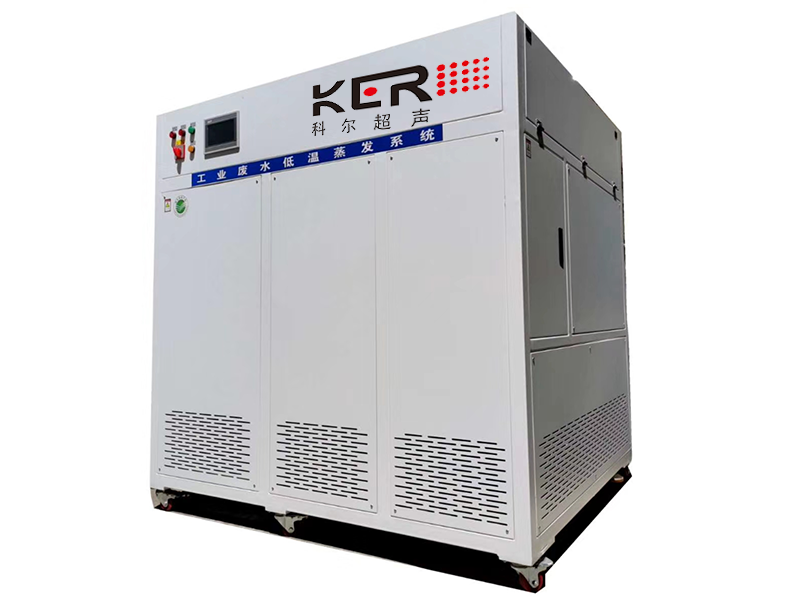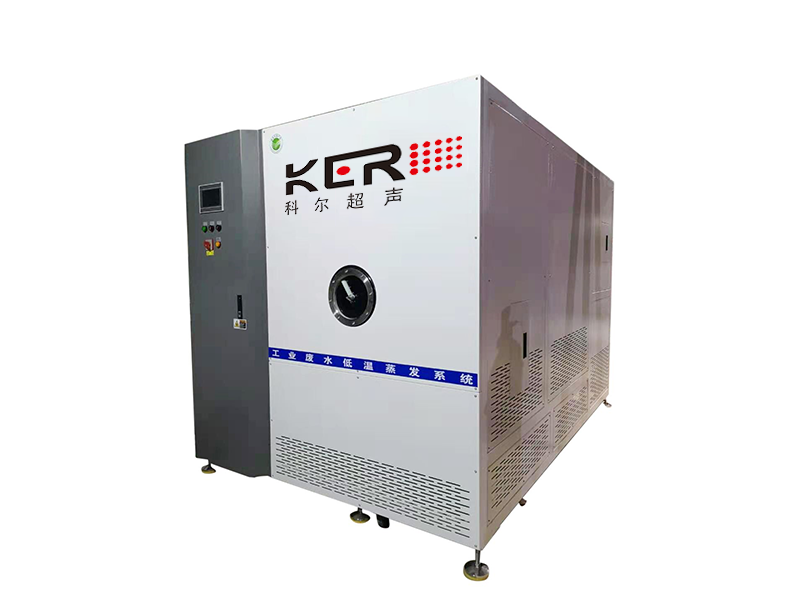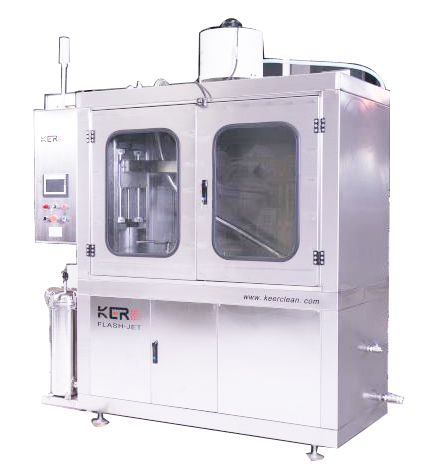
超聲波清洗機是如何工作的
作者:創始人來源:http://www.ahfanglei.com/時間:2025-08-09
超聲波清洗機的發展曆史(shǐ)
The Development History of Ultrasonic Cleaning Machines
超聲波清洗機的發展曆史可以追溯到20世紀初,自1880年居裏兄弟發現壓電效應以(yǐ)來,壓(yā)電學成為現代科學與技術的一個重要領域。然而(ér),壓電換(huàn)能器最(zuì)早應用於工程是僅作為濾波器(qì)件的石英晶體諧振器,而壓電效應在工程中應用也隻局限(xiàn)於水聲和電聲器件。
The development history of ultrasonic cleaning machines can be traced back to the early 20th century. Since the discovery of the piezoelectric effect by the Curie brothers in 1880, piezoelectricity has become an important field of modern science and technology. However, the earliest application of piezoelectric transducers in engineering was only as quartz crystal resonators as filtering devices, and the application of piezoelectric effects in engineering was also limited to underwater and electroacoustic devices.
在第一次世界大戰期間,法國著名物理學家保羅·朗之萬發明(míng)了“鋼-石英(yīng)-鋼(gāng)”結構的夾心壓電換能器,並成功地在水中進行(háng)了(le)發射和接收(shōu)超聲波的實驗,這是人類首次對超聲波技術(shù)的應用展(zhǎn)開研究。
During World War I, the famous French physicist Paul Langevin invented a sandwich piezoelectric transducer with a "steel quartz steel" structure and successfully conducted experiments on transmitting and receiving ultrasonic waves in water. This was the first time that humans had conducted research on the application of ultrasonic technology.
然而,真正的超聲波清洗技術研究始於20世紀50年代,當時H.B.Miller對換能器做出了巨大改進,發(fā)展了加預應力的(de)複合換能器,為功率超聲波技術的工業(yè)應用奠定了(le)基礎。在(zài)這一時期,超(chāo)聲波清洗(xǐ)技術主要應用於電子、光學和醫(yī)藥等(děng)領域。由於其強大的(de)實(shí)用性和(hé)廣泛(fàn)的(de)應用範圍,從(cóng)大(dà)型機械零部(bù)件到小型半導體器件等的清(qīng)洗,久而(ér)久之被俗稱為“無刷清洗”。
However, the real research on ultrasonic cleaning technology began in the 1950s, when H.B. Miller made significant improvements to transducers and developed pre-stressed composite transducers, laying the foundation for the industrial application of power ultrasonic technology. During this period, ultrasonic cleaning technology was mainly applied in fields such as electronics, optics, and medicine. Due to its strong practicality and wide range of applications, the cleaning of large mechanical components to small semiconductor devices has gradually become commonly known as "brushless cleaning".
然而,此技術的廣泛應用並非一帆風順。盡管超聲波清(qīng)洗機(jī)已經有了30多年的曆史,日本在25年前就開始使用,但一個誤解一(yī)直困擾著這項技(jì)術,使(shǐ)人們懷疑超聲波清(qīng)洗器的效果。
However, the widespread application of this technology has not been smooth sailing. Although ultrasonic cleaning machines have a history of over 30 years and were first used in Japan 25 years ago, a misconception has plagued this technology, leading people to doubt the effectiveness of ultrasonic cleaning machines.
傳統的超聲波清洗器理論認(rèn)為(wéi),氣泡起到了(le)清洗的作用。但科學家經過反複試驗發現,事實上,氣泡隻是由超聲波的強力粗密波(bō)引起的(de)單純的氣體爆發而已,它反而會抑製甚至消除超聲波清洗器的清洗力,真正發揮清洗作用的是真空的氣穴(xué)。
The traditional ultrasonic cleaner theory holds that bubbles play a cleaning role. But scientists have found through repeated experiments that in fact, bubbles are just simple gas explosions caused by the strong and dense waves of ultrasound. They can actually suppress or even eliminate the cleaning power of ultrasonic cleaners, and the true cleaning effect is the vacuum air pockets.
日本清洗工程研究(jiū)會創始人柴野佳英在1987年公(gōng)開發表了這一(yī)超聲波清洗的基本理論,並根據(jù)這一(yī)理論研製出了技術領先(xiān)的超聲波清洗設備。
The founder of the Japanese Cleaning Engineering Research Association, Yoshihide Shibano, publicly published the basic theory of ultrasonic cleaning in 1987 and developed a technologically advanced ultrasonic cleaning equipment based on this theory.
隨著應用範圍的擴大和科技的進步,超聲波清洗設(shè)備也在(zài)不斷發展和改進。傳統的超聲波清洗(xǐ)設備由於(yú)自動化(huà)程度不高(gāo)而難以保證零件清(qīng)洗的均勻性,近年(nián)來逐漸出現了自動(dòng)化程度高、靈活性強的自動化超聲波清洗設備。
With the expansion of application scope and the advancement of technology, ultrasonic cleaning equipment is also constantly developing and improving. Traditional ultrasonic cleaning equipment is difficult to ensure the uniformity of part cleaning due to its low degree of automation. In recent years, automated ultrasonic cleaning equipment with high degree of automation and strong flexibility has gradually emerged.
如今,超聲波(bō)清(qīng)洗機更是進一步進入到人們的生活中來,幫助清洗一些結構複雜,難以清理(lǐ)的物件。
Nowadays, ultrasonic cleaning machines have further entered people's lives, helping to clean some structurally complex and difficult to clean objects.
超聲波(bō)清洗機的工作(zuò)原理
The working principle of ultrasonic cleaning machine
工作原理上,超聲波清洗機主(zhǔ)要是(shì)通過換(huàn)能器將功率(lǜ)超聲頻源的聲能轉換成機(jī)械振動,通過清洗槽壁(bì)將超聲波(bō)輻射到槽子中的清洗液。
In terms of working principle, the ultrasonic cleaning machine mainly converts the sound energy of the power ultrasonic frequency source into mechanical vibration through a transducer, and radiates the ultrasonic waves into the cleaning solution in the tank through the cleaning tank wall.
由於受到超聲波的輻射,使槽內液體(tǐ)中的微氣泡能夠(gòu)在聲波的作用下保(bǎo)持振動。這些微氣泡在破裂時(shí)會產生強大的衝擊力,從而將汙垢和油脂從被(bèi)清洗物表麵及內部分離。
Due to the radiation of ultrasonic waves, microbubbles in the liquid inside the tank can maintain vibration under the action of sound waves. These microbubbles generate strong impact force when they rupture, thereby separating dirt and grease from the surface and interior of the cleaned object.
同時,超聲波在清洗液中傳播(bō)時會產生正負交變的聲壓,形成射流,衝擊(jī)清洗件(jiàn)。並且由於非線性效應會產生聲流和微聲流,而超聲空化在固體和液體界麵會產生高速的微(wēi)射流,所有這些作用能夠破壞汙物,除去或削弱邊界汙層,增加攪拌、擴散作用,加速(sù)可溶性汙物的溶(róng)解,強化化學清洗劑的清洗作用。
At the same time, when ultrasound propagates in the cleaning solution, it generates positive and negative alternating sound pressure, forming a jet that impacts the cleaning parts. And due to nonlinear effects, acoustic and micro acoustic flows are generated, while ultrasonic cavitation produces high-speed micro jets at the solid and liquid interface. All of these effects can destroy pollutants, remove or weaken boundary pollution layers, increase stirring and diffusion effects, accelerate the dissolution of soluble pollutants, and enhance the cleaning effect of chemical cleaning agents.
具體而言(yán),當液體被利(lì)用時(shí),將產生(shēng)氣泡,並且當液體被壓縮時,氣(qì)泡將被壓縮,它會被粉碎和(hé)破碎,這便發生了著名的“超聲波空化效(xiào)應”。在空化效應中,氣泡閉合的瞬間產生(shēng)衝擊波,使氣泡周圍產生巨大的壓力(1012-1013pa)及局部(bù)調溫,這(zhè)種超聲波空化所產生的巨大壓力能破壞不溶性汙物而使他們分化於溶液中。同(tóng)時,蒸汽型空化(huà)對汙垢的直接反複衝擊也有(yǒu)利於汙漬的清除。
Specifically, when a liquid is utilized, bubbles will be generated, and when the liquid is compressed, the bubbles will be compressed, crushed, and broken, resulting in the famous "ultrasonic cavitation effect". In the cavitation effect, a shock wave is generated at the moment when the bubble closes, causing a huge pressure (1012-1013pa) and local temperature regulation around the bubble. The huge pressure generated by ultrasonic cavitation can destroy insoluble pollutants and cause them to differentiate into solution. At the same time, the direct and repeated impact of steam cavitation on dirt is also beneficial for the removal of stains.
此(cǐ)外,超聲波清洗也利用了超聲波在液體中的空化作用、加速度作用及直進流作用對液體和汙物直(zhí)接或間接的作用(yòng)。這樣可以使汙物層分散、乳化、剝離,從而達到清洗目(mù)的。
In addition, ultrasonic cleaning also utilizes the cavitation, acceleration, and direct flow effects of ultrasonic waves in liquids to directly or indirectly affect liquids and pollutants. This can disperse, emulsify, and peel off the dirt layer, thereby achieving the purpose of cleaning.
值得一(yī)提的是,超(chāo)聲波(bō)清洗機中的換能器起(qǐ)著至關重要的作用,它是一種能量轉換器件。它的主要功能是將輸入的電(diàn)功(gōng)率轉換成機械功率(即超聲波)再傳(chuán)遞出去,而自身消耗掉的功率很少(小於10%)。
It is worth mentioning that the transducer in the ultrasonic cleaning machine plays a crucial role as it is an energy conversion device. Its main function is to convert the input electrical power into mechanical power (i.e. ultrasound) and transmit it out, while consuming very little power (less than 10%) on its own.
具體來說,換能器將功率超聲頻源的聲能轉換成機(jī)械振動(dòng),通過清洗槽壁將超聲(shēng)波(bō)輻射到槽子中的清洗液。由於受到超聲波的輻射,使槽內液體中的微氣(qì)泡能夠在聲波的作用下從而保(bǎo)持振動。
Specifically, the transducer converts the sound energy of the power ultrasonic frequency source into mechanical vibration, and radiates the ultrasonic waves into the cleaning solution in the tank through the cleaning tank wall. Due to the radiation of ultrasonic waves, microbubbles in the liquid inside the tank can maintain vibration under the action of sound waves.
當使用超聲波換能(néng)器時,最需(xū)要考慮的問題是與輸入輸出端的匹配,其次是機械安裝和配(pèi)合尺寸。此外,換能器(qì)產(chǎn)生的振幅(fú)極小的高頻震動並傳播到清洗槽(cáo)中,通過機械能作(zuò)用將產品的汙物清除,提高產品(pǐn)潔淨度。
When using ultrasonic transducers, the most important consideration is the matching with the input and output terminals, followed by mechanical installation and fitting dimensions. In addition, the high-frequency vibration generated by the transducer with extremely small amplitude is transmitted to the cleaning tank, and the product's dirt is removed through mechanical energy, improving the cleanliness of the product.
小結
Summary
超聲波清洗機通過一種被稱為“空化(huà)效應”的原理來清除汙漬,而不是(shì)利用(yòng)氣泡。未來(lái)隨著技術的不(bú)斷進步和市場需求的不斷增長,超聲波清洗(xǐ)機將會在更多領域(yù)得到應用,同時也會更加環保、高效和智能化。
Ultrasonic cleaning machines use a principle called "cavitation effect" to remove stains, rather than using bubbles. In the future, with the continuous advancement of technology and the growing market demand, ultrasonic cleaning machines will be applied in more fields, while also becoming more environmentally friendly, efficient, and intelligent.
本文由 超聲波清洗機 友情(qíng)奉獻(xiàn).更多有關的知識請點擊 http://www.ahfanglei.com/ 真誠的態度.為您提(tí)供(gòng)為全麵的服務.更多(duō)有關的知識91污將會陸續向大家奉獻.敬請期待.
This article is a friendly contribution from an ultrasonic cleaning machine For more related knowledge, please click http://www.ahfanglei.com/ Sincere attitude To provide you with comprehensive services We will gradually contribute more relevant knowledge to everyone Coming soon.
推薦產品
推薦文章
 公司:濟南(nán)科爾超聲波設備有(yǒu)限公司
公司:濟南(nán)科爾超聲波設備有(yǒu)限公司  熱線:18663767799
熱線:18663767799 地址(zhǐ):山東省濟南市(shì)濟(jì)陽區(qū)創(chuàng)業路與啟航街交叉(chā)口南40米
地址(zhǐ):山東省濟南市(shì)濟(jì)陽區(qū)創(chuàng)業路與啟航街交叉(chā)口南40米








 常見問題
常見問題

 聯係91污
聯係91污
 谘(zī)詢電話:18663767799
谘(zī)詢電話:18663767799 E-MAIL:jnkergs@163.com
E-MAIL:jnkergs@163.com 地址:山東省濟南市濟陽區創業路與啟(qǐ)航街交叉口南40米
地址:山東省濟南市濟陽區創業路與啟(qǐ)航街交叉口南40米 魯公網安備 37011202001385號
魯公網安備 37011202001385號
